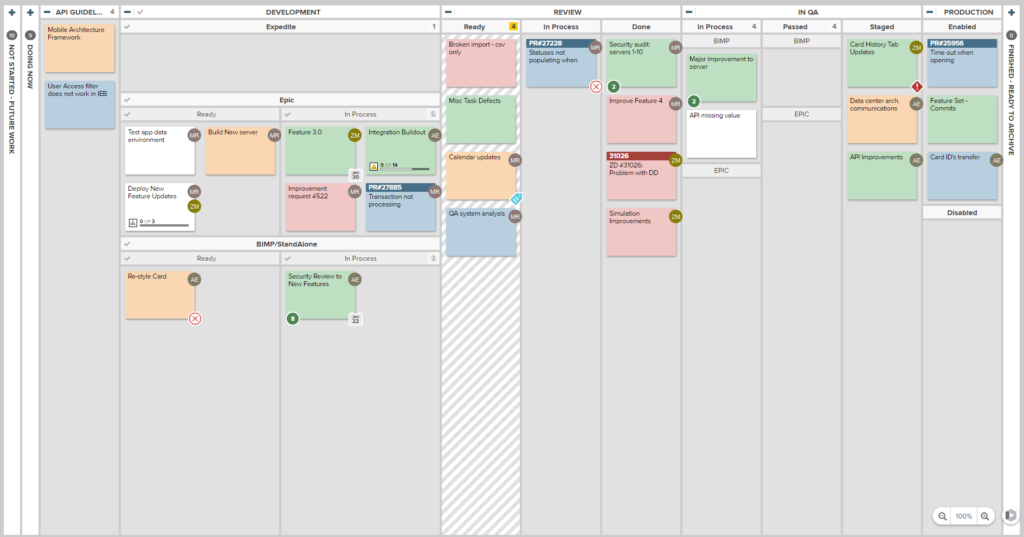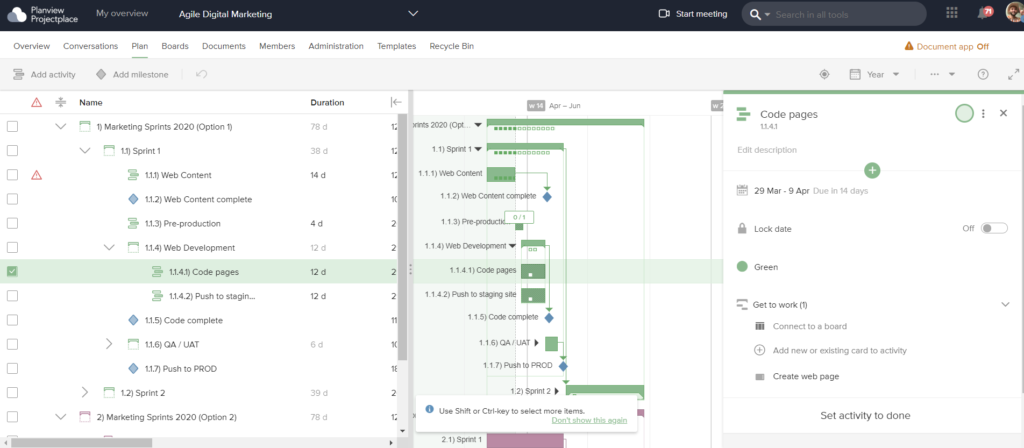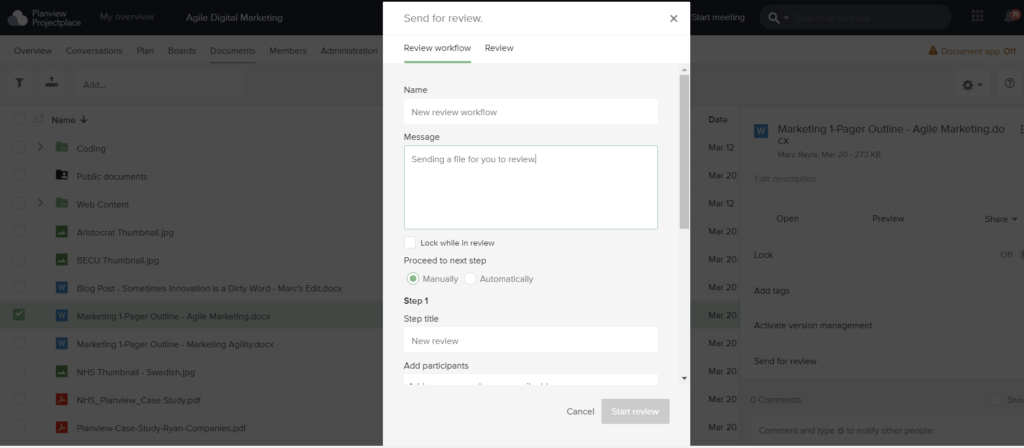
Part of good project management is successfully managing multiple projects when needed.
Most project managers are expected to juggle a mixture of small and large projects at any given time. This is why project managers have earned a reputation for being professional multitaskers.
Multitasking sounds good at first, but making it a habit can actually be detrimental to your work–as we’ll discuss later.
The truth is that managing multiple projects is difficult. And to do it successfully, you must first develop a system that helps you work efficiently without becoming overwhelmed.
What Are the Challenges of Managing Multiple Projects?
Managing multiple projects takes a lot of time and energy. It’s easy for you to fall behind if you don’t stay on top of your work––and when that happens, you’ll feel like you’re being pulled in 10 different directions.
Many project managers struggle with moving from one project to another. It doesn’t always feel like a smooth transition, making it difficult to devote their attention to one project at a time. Important details can get overlooked because you’re busy thinking about several projects at the same time.
If you’re still managing projects with spreadsheets, you can expect a good portion of your time to be spent doing administrative work.
And when you’re not manually entering data and double-checking that data, you’ve got another challenge. You must ensure everyone’s constantly working with the most-up-to-date spreadsheet, which can feel next to impossible when managing multiple projects simultaneously.
8 Tips for Leading Multiple Projects Efficiently and Effectively
Now that we’ve touched on the issues of leading multiple projects, how do you overcome these challenges?
Below are eight tips to help you manage your projects more effectively.
1. Stop multitasking
Whether or not you’re practicing Agile project management, you may have heard of “making your work visible” to help you manage projects more effectively. Kanban is a popular way to visualize work.
Kanban is a visual management framework that uses boards and cards for planning, tracking, and completing work, as well as to fuel continuous improvement efforts.
There’s a reason why Kanban boards have work-in-progress (WIP) limits––because multitasking is counterproductive. Project management demands a lot of attention, and multitasking takes away from that.

In fact, studies show that multitasking doesn’t work. It’s been shown to deplete mental energy, increasing your likelihood of making mistakes.
2. Plan your projects
Start with a plan. Managing multiple projects successfully is impossible without effective planning. So, first:
- Define your goals for reach project
- Factor in feedback and approvals when planning your timeline
- Use one project schedule for every project you’re currently managing
If you’re setting project milestones, avoid having significant milestones take place at the same time, if possible. You don’t want to be coordinating more than one product launch (or a milestone equally as time-consuming) at the same time.
Many project managers use Gantt charts to illustrate their project schedules, while others prefer timelines, Kanban boards, Scrum boards, or other methods.
3. Prioritize work
Successfully managing multiple projects requires significant strategic planning. Some tasks will take precedence over others, and ensuring your projects run smoothly requires you to prioritize your work.
Every project is different.
When you’re leading multiple projects, it’s important for you to understand the ins and outs of every project you’re managing. That means not just knowing the goals and desired outcomes, but also how to achieve those objectives. Once you understand that, you can determine which tasks are fundamental to helping you successfully complete your projects––and prioritize those tasks accordingly.

4. Communicate effectively
Communication is the cornerstone of every successful project. But when you’re managing multiple projects, good communication is essential to ensuring your success.
A common misconception about good communication is that you should communicate constantly. If you’re bombarding teams with direct messages and emails, important project updates could get lost in the stream of information.
Instead of communicating constantly, communicate effectively. Give the information teams need to know to complete their tasks, but leave out any unnecessary correspondence that could lead to message fatigue.
5. Set and manage expectations
If you and your stakeholders aren’t on the same page, then it’s hard for projects to run smoothly. Let stakeholders know what to expect during various stages of the project, and understand what outcomes they’re looking for.
It’s important to stay in touch with stakeholders, giving them project updates and answering any questions they have. Touch base with them once or twice a month, but don’t flood them with excessive communication, such as email threads or Slack channels discussing everyday decisions. That could create confusion that leads to misalignment.

6. Delegate when needed
Depending on your project management approach, you could be hands-on with your team or you could leave them to create their own action plans. Regardless of which project management methodology you follow, you should avoid micromanaging when you’re managing multiple projects.
A good leader places faith in their teams, building trust and mutual respect. This means being able to delegate tasks to team members when needed. Next time you feel like you’re being pulled in multiple directions, see what you can hand off to your team. That way, you can devote your energy to higher-level tasks that only the project manager can complete.
7. Use a single tool
Consider using a software solution that brings all your projects under the same roof. This will make it easier for you to manage multiple projects, because you don’t have to keep track of several different spreadsheets.
Choose an effective project management solution that comes with integrated communication features, document management services, and tools for planning and executing tasks. That way, you can plan, communicate, and collaborate with teams from one easy-to-use platform.

8. Adjust and adapt
Part of being an effective project manager is being able to think on your feet. Regardless of whether you’re managing one or seven projects, something unexpected is bound to happen. So, how do you cope?
A good project manager knows to:
- Be proactive rather than reactive by anticipating potential problems
- Adjust long-term plans when necessary
- Be flexible in the face of uncertainty by coming up with solutions that address problems that may arise
Stay on Top of Your Projects
Let’s face it. Managing multiple projects is tough, regardless of whether you’re an accidental project manager or a seasoned veteran. The above tips will help you stay on top of your projects, so you don’t feel like you’re in a constant state of playing catch-up.
If you’re looking for a software solution to help you manage multiple projects more efficiently, Planview can help. Find out which work management software is right for your team with this side-by-side comparison chart.


![A Global Collaborative Work Management Blueprint [Video]](https://blog.planview.com/wp-content/uploads/2019/07/A-Global-Collaborative-Work-management-blueprint.png)

